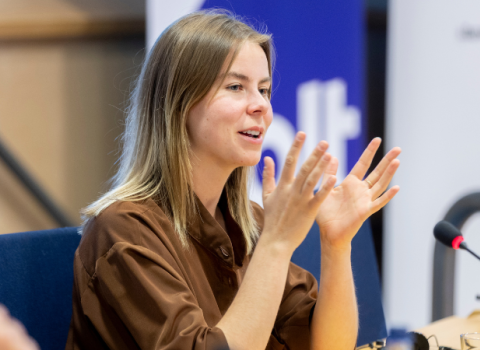Biotechnology is booming in Leuven. The construction of Bio-Incubator 5 will help to meet the huge demand for customised laboratory and office facilities. As with the existing Bio-Incubators, KU Leuven and VIB will play a leading role in the project.
Leuven Bio-Incubator provides space and support for both start-ups and well-established businesses in the biotechnology sector. In the Arenberg Science Park – located strategically close to KU Leuven, UZ Leuven, VIB and imec – three Bio-Incubator buildings already house quite a few biotech companies (a complete list is available here), as well as the Centre for Drug Design and Discovery (CD3), which translates fundamental research into new medicines.
More space needed
In autumn, Bio-Incubator 4 will open in the Arenberg Science Park, offering 4500 m2 of lab and office space. Bio-Incubator 4 will first and foremost focus on businesses, but translational research by KU Leuven and VIB will have a place as well.
Bio-Incubator 4 is still under construction, but all available space in the building has already been reserved. That’s why the construction of Bio-Incubator 5 is launched now. Together, Bio-Incubator 4 and 5 will form the 'Arenberg Accelerator' because they explicitly target biotechnology companies that want to grow faster.
Sustainable growth for the region
Bio-Incubator 5 will comprise 3300 m2 of flexible lab and office space for about 160 employees. Furthermore, the arrival of new companies can also create indirect jobs. Bio-Incubator 5 thus offers great added value to the region and strengthens the regional ecosystem.
The building should be ready by early 2024. The project costs 12 million euros and is funded with bank financing and a capital injection by KU Leuven and VIB. The City of Leuven and the Province of Flemish Brabant offer their full support to the realisation of the project.
Sustainability comes first in the construction of Bio-Incubator 4 and 5. Low-carbon concrete will be used, for example, and the buildings will be heated without any fossil fuels.
This article was first published on 9 June by KU Leuven.




 A unique international forum for public research organisations and companies to connect their external engagement with strategic interests around their R&D system.
A unique international forum for public research organisations and companies to connect their external engagement with strategic interests around their R&D system.